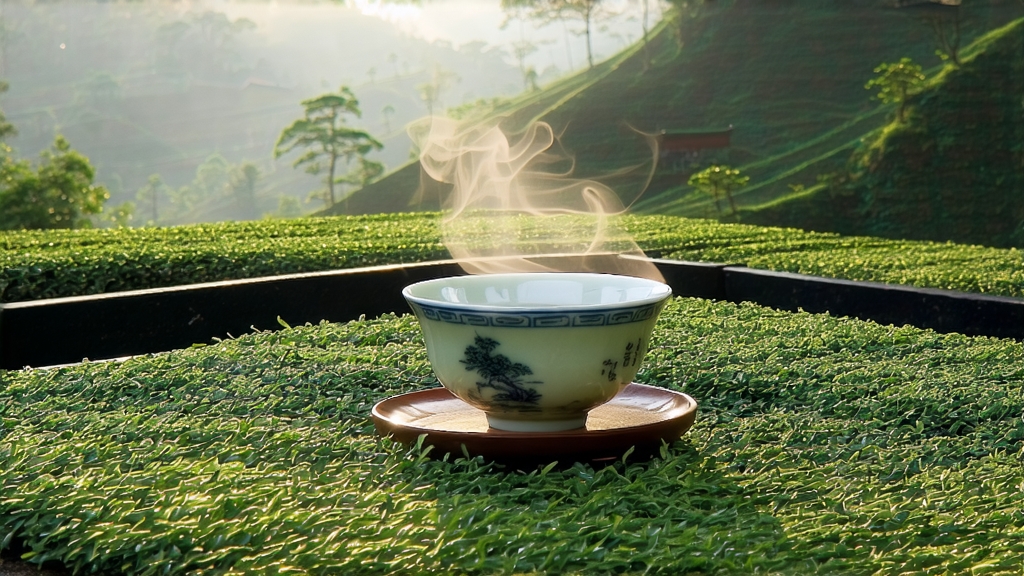
Alishan High-Mountain Oolong is the liquid echo of Taiwan’s central mountain range, a tea that carries the chill of 1,200-metre dawns and the perfume of rhododendron forests. First planted on a commercial scale in the early 1980s, it is a relative newcomer compared with the centuries-old Minnan oolongs of Fujian, yet it has already become the benchmark for “gaoshan cha” (high-mountain tea) across the Chinese tea world. Its story begins when tea growers from the Pinglin district migrated southward, lured by the promise of cooler nights, volcanic soil, and the persistent cloud cover that acts like a natural shade cloth, slowing leaf growth and concentrating amino acids. Within a decade the cultivar Qing Xin (literally “green heart”) found its spiritual home among the red cypress and cherry blossoms of Alishan, and a new Taiwanese classic was born.
Botanically, Alishan oolong is a narrow-sense variety of Camellia sinensis var. sinensis, but the mountain itself is the true cultivar. Day-night temperature differentials of 10 °C or more force the bush to manufacture more sucrose and fragrant alcohols; the iron-rich laterite soil delivers a subtle mineral spine; and the 2,500 mm annual rainfall, delivered almost daily in a fine mist, keeps leaf turgor high and tannin low. The result is a tea that tastes less like the stereotypical “oolong” and more like sipping the atmosphere of a cloud forest.
Plucking follows the Taiwanese high-mountain protocol: one bud plus two or three leaves, hand-picked at 9 a.m. when the mountain fog has just lifted but before the sun turns the dew into镜面反射的强光. Pickers wear bamboo conical hats and carry baskets lined with banana leaf to prevent bruising; any mechanical damage at this stage would trigger premature oxidation and flatten the prized floral top notes. A single mu (0.067 hectare) yields only 15 kg of fresh leaf, which will shrink to 3 kg of finished tea after the marathon processing that follows.
Withering begins outdoors on raised bamboo trays set among the tea garden itself so that the leaf continues to inhale the surrounding aromatics of cedar and orchid. Ambient temperature hovers around 18 °C; humidity stays above 85 %. Every twenty minutes the leaf is gently tossed by hand, a motion known as “qing lang” that bruises the edges just enough to liberate leaf juices while keeping the vein intact. After ninety minutes the trays are moved indoors onto linen-covered racks where they rest for another six hours, losing 65 % of their moisture and developing the signature Alishan scent of white peach and lily.
Oxidation is the pivotal act that turns Alishan leaf into oolong rather than green tea. Here the tea master relies on olfactory triage: when the aroma shifts from cut grass to honeydew melon, the leaf is rushed to the kill-green pan. The firing temperature is kept low—only 180 °C—for a brief three minutes, just enough to denature polyphenol oxidase while preserving the fragile linalool and geraniol compounds that create the tea’s alpine bouquet. Immediately afterward the leaf is wrapped in cotton cloth and loaded into the ball-rolling machine, a revolving drum that compresses the semi-oxidized leaf into tight hemispheres. This repeated rolling-and-unrolling, interspersed with quick re-firings, fractures cell walls and coaxes oils to the surface, giving Alishan oolong its jade-green pellets that unfurl like miniature ferns during brewing.
Roasting, the final variable, is where each estate stamps its identity. The modern “light roast” style—popularized by competition-grade lots—receives only a single 80 °C bake for two hours, preserving a crystalline, milk-white liquor. Traditionalists favor a deeper charcoal roast over longan wood, extending the baking across three moon cycles to create a amber liquor with notes of toasted almond and crème brûlée. Both styles share the same cultivar and mountain, yet they speak different dialects of flavor.
To brew Alishan oolong like a Taiwanese tea master, begin with a 120 ml gaiwan or a tall cylindrical tasting cup. Use 6 g of leaf—about one heaping tablespoon—for every 100 ml of water. The water itself should be mountain-soft, ideally drawn from the same watershed as